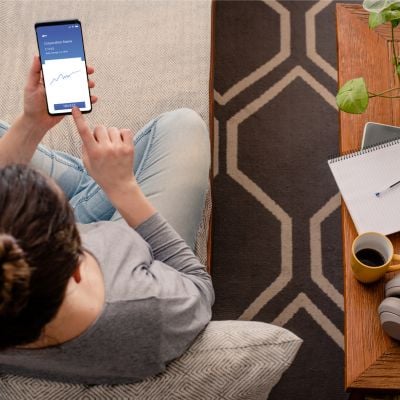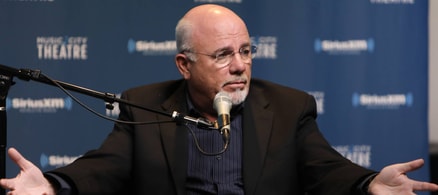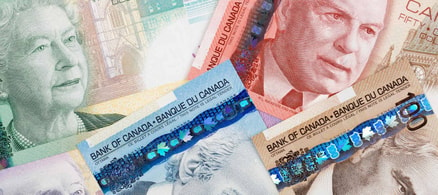Appliances and electronics
Did you know that a device that’s plugged in draws power even if it’s not in use? That's called a “phantom load" or "vampire load," and it costs the average family around $150 per year.
Think about whether it’s really necessary to leave a toaster or microwave plugged in all the time. It may be convenient, but the energy use might not be worth it.
Consider using smart outlets or power strips. These devices plug into standard wall outlets and can help eliminate phantom load used by devices. They also allow you to monitor energy use and turn devices on and off remotely.
And when it comes time to buy a new appliance or electronic device, make sure that the item is energy efficient. While most new appliances meet a certain standard, it never hurts to check for better options.
Maximize Your Tax Refund with TurboTax Canada!
Simplify tax season with this user-friendly software. Get step-by-step guidance, maximize deductions, and file with confidence. Trusted by millions, TurboTax Canada ensures accuracy and peace of mind. Start your taxes today and get the refund you deserve
Get the tax refund you deserveHeating and cooling
Walking into a cool house after being out in the hot sun is always refreshing. But if you’re in the habit of leaving the air conditioner on when you’re out of the house, it’s time to change your ways.
According to National Resources Canada heating your home makes up about 64% of your utility bill, while cooling is about 2%.
When it’s warm out and you’re not home, either turn off your AC unit completely or set it at a higher temperature so it’s not using as much energy. Conversely, lower your thermostat in the winter to help reduce your costs.
You can also invest in a smart thermostat to help you out. These devices allow you to program the temperature for different times and situations.
Some smart thermostats let you operate it via your mobile device. That means you can have the temperature raised while you’re not home, then when you’re on your way back, simply start the AC again and your home will be cool when you enter.
Lights
The lights you use in your home are a major source of energy consumption.
When you leave a room, or if it’s bright outside, do your best to keep the lights off. This simple act will help you cut down energy costs.
The next time an old incandescent lightbulb burns out, install an LED bulb instead. LED bulbs use around [90% less energy]https://www.nrcan.gc.ca/energy-efficiency/spotlight-energy-efficiency/2021/11/14/everything-led/23946) than incandescent bulbs and can last at least 15 times longer.
In fact, you can save up to $6 a year for each light bulb you switch to an incandescent one.
Use focused task lighting, like a lamp, instead of overhead lights when possible. Having the focused light will not only require less lights to be used, but it can also make whatever job you’re doing easier.
Grow Your Savings Effortlessly with Moka
Automate your savings with every purchase and watch your money multiply. Moka rounds up your transactions and invests the spare change. Start building wealth effortlessly today. Join thousands of Canadians embracing financial freedom with Moka
Sign up nowWater
The way your household uses water is another major contributor to energy costs — water heating amounts to about 18% of your total energy use, and each Canadian uses about 329 litres of water per day.
If you leave the water running while you're shaving or brushing your teeth, try shutting the tap off when the water is not in immediate use.
Turning your tap off while brushing your teeth alone can save 30-50 litres of water each day.
Shortening the time you take in the shower can also significantly reduce hot water usage. Long showers are nice, but they aren’t the easiest on energy (or water) usage.
And that dripping kitchen faucet isn’t good, either. A tap that drips at a rate of one drop per second wastes about 10,000 litres of water per year.
In the kitchen
Using your microwave and slow cooker(or crockpot) will use less energy than your oven. In the summertime, this exercise also helps reduce cooling costs since less heat is emitted into your home.
You’ll also want to check to make sure that your fridge and freezer are properly sealed, so that you’re not losing energy even if they're closed.
If you have a second fridge or freezer, consider whether you really need it right now. If you only need it for certain periods, like around the holidays, unplug the device.
While you’re at it, check out the settings on your dishwasher. Using heat-dry, where the dishwasher uses its heating elements to dry the dishes, consumes a lot of energy. If you don’t need it, turn it off.
Laundry
When it comes time to do a wash, use cold water to reduce energy costs. Hot water in laundry accounts for about 90% of the energy used by the machine.
If possible, hang your clothes to dry and save yourself from having to run the dryer. If you need to use it, make sure you’ve got a full load in there and not just one or two items.
Windows and doors
New windows and doors often come with energy efficiency certification. Having properly sealed doors and windows reduces energy loss and helps lower the cost of heating or cooling your home.
Your doors and windows might be responsible for 25% of your home’s heating and cooling cost.
Replacing your windows and doors is expensive, even when you take into account any government rebates that are available. If this isn’t in the cards for you, take the time to check for any broken seals around windows or doors. Most hardware stores offer solutions to help you fix drafts around doors and windows.
Similarly, buying good window coverings can help you manage the amount of energy that enters and escapes your rooms. Drawing blinds closed can help you reduce the temperature in a room in the summer, and opening them can help warm the space in the winter.
Having good air circulation can also help regulate the temperature in a room, so opening a window and turning on a fan in the summer can help cool a space without having to turn on the AC.
Government rebates
If you’re looking to improve the energy efficiency of your home, the good news is the government’s here to help.
The Canada Greener Homes Initiative offers grants ranging from $125 to $5,000 to help you retrofit your home to make it more energy efficient. The program can also help cover costs of getting a home evaluation and provide interest-free loans to help with retrofits
Those new windows may be expensive, but knowing that the government offers rebates up to $5000 to replace windows and doors with Energy Star models helps lessen the burden.
If you live in Quebec or Nova Scotia, before you start your retrofit, be sure to have an evaluation performed by Rénoclimat or Home Energy Assessment respectively. They will provide you with a detailed list of work that can be done to improve your home’s efficiency, in addition to information about how to receive the grants.
In other provinces, EnerGuide will perform the home evaluation and help you on your way.
Lowering your home energy use not only helps the environment, but it saves you money. Take a look at your habits around your home and see if there are ways you can reduce the energy you use.
You might be surprised that simple changes in behaviour can save you money on your hydro and water bills.
Sponsored
Trade Smarter, Today
With CIBC Investor's Edge, kick-start your portfolio with 100 free trades and up to $4,500 cash back.







